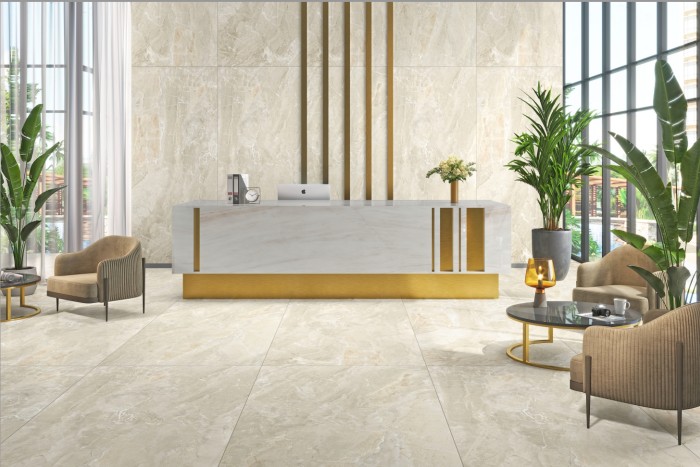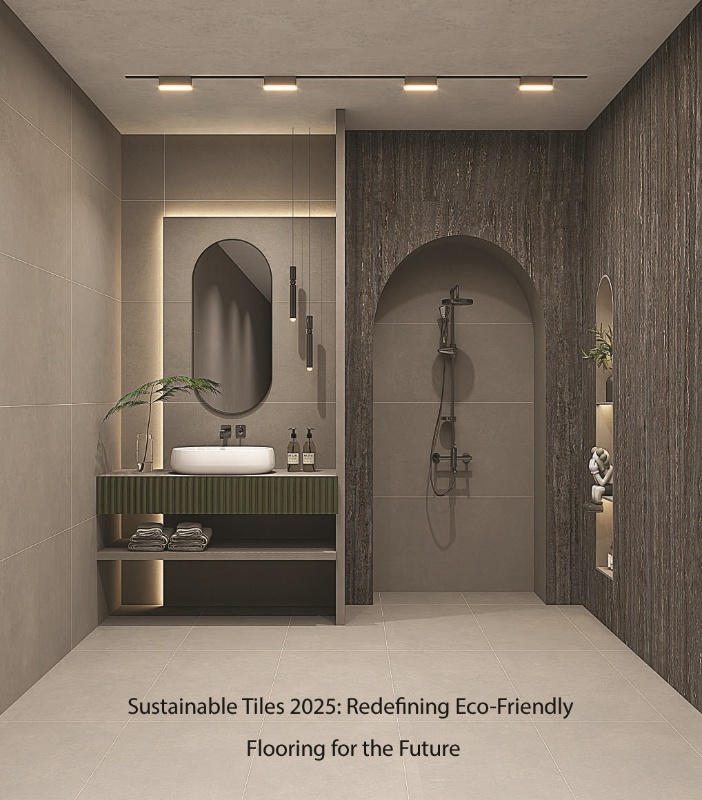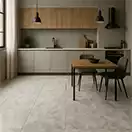Sustainable Tiles 2025: Redefining Eco-Friendly Flooring for the Future
The process of designing our homes is evolving quickly. While it is still about creating beautiful spaces, now we have to create spaces that respect the planet. This balance of style and sustainability is included in sustainable tiles 2025. The evolution of flooring is the combination of eco-friendly ceramic tiles and recycled porcelain tiles, where durability, design, and sustainability seamlessly converge.
The forward-thinking companies like Volark Tiles are proving that tiles can be both elegant and environmentally friendly tiles making them the ultimate choice for modern homes and green buildings alike.
Key Takeaways
- Sustainable Tiles 2025 is transforming flooring with durability, beauty, and sustainability..
- Eco-friendly ceramic tiles, recycled porcelain tiles, green building tiles, and low-VOC tiles are today's most dependable sustainable flooring selections.
- Homeowners value not only aesthetics but also long life, eco-conscious production, and healthier living spaces.
- Brands like Volark Tiles set the global benchmark for eco-conscious interior design.
- Beyond tile manufacturing, carbon neutrality and circular tile manufacturing sustainability will emerge.
Why Sustainable Tiles Matter in 2025
The construction industry is one of the biggest sources of greenhouse gas emissions worldwide, and it contributes just under 40% of emissions too. Sustainability is more than just a good feeling; it's an obligation. Tiles are one of the most commonly used materials for floors and walls; therefore, tiles are more impactful in this sustainability journey.
When homeowners select their flooring, they have sustainable options which do not compromise beauty or durability. In fact, the durability of sustainable flooring often translates into longer life, indoor air quality, and timeless beauty. So, whether this is a second remodel of your kitchen, a new design of your living room, or just a certified green space, the appropriate sustainable tiles will get you the look you want whilst also setting you on the journey to minimize your environmental footprint.
What Makes a Tile “Sustainable”?
Not every tile marketed as “green” truly is. To qualify as a genuinely sustainable choice, tiles should meet multiple eco-standards:
- Sustainable Materials: Use of natural clay, recycled porcelain, or mineral-based blends.
- Low-VOC Manufacturing: Reduction of harmful chemicals during production.
- Water Efficiency: Factories that recycle and reuse water responsibly.
- Energy Responsibility: Production powered by renewable energy or reduced fossil fuels.
- Longevity: Tiles designed to last decades, minimizing replacement waste.

Together, these factors ensure tiles are not just “green” in name, but also in impact.
Tile Trend 2025: A Shift Toward Sustainability
Sustainability is no longer a niche; it's mainstream. The most important Tile Trend 2025 is the shift toward tiles that prioritize eco-conscious living without compromising on design. Here are the highlights:
- Eco-Friendly Ceramic Tiles: Made with natural clay and often produced with renewable energy. Biodegradable and safe for long-term use.
- Recycled Porcelain Tiles: Crafted from post-consumer and post-industrial waste, diverting tons of materials from landfills.
- Low-VOC Tiles: Safer for families, improving indoor air quality.
- Green Building Tiles: Specifically designed to meet LEED and other eco-certification standards.
- Nature-Inspired Designs: Earthy tones, wood-like finishes, and stone effects that connect your interiors to nature.
These aren’t just trends; they represent the new standard in responsible building and design.
The Evolution of Sustainable Tiles
Looking back, tiles have come a long way from traditional clay-based products to the versatile, durable, and stylish sustainable flooring options we see today. Here’s how things compare:
|
Feature |
Traditional Tiles |
Sustainable Tiles 2025 |
|
Materials |
Virgin clay, high-energy processes |
Eco-friendly ceramic, recycled porcelain |
|
Emissions |
Higher VOC levels |
Low-VOC, clean air |
|
Lifespan |
15-20 years |
25–30 years |
|
Certifications |
Rare |
LEED-ready, green building tiles |
What was once considered “optional” is now the default expectation for responsible homeowners and architects.
Homeowner Priorities: Why People Choose Sustainable Tiles
Research shows that durability and eco-friendly materials are the leading reasons people invest in sustainable flooring.
Chart: Homeowner Priorities in Choosing Sustainable Tiles (2025)
- Durability & Long Life: 40%
- Eco-Friendly Materials: 28%
- Indoor Air Quality (Low-VOC): 18%
- Stylish Natural Aesthetics: 10%
- Green Building Certification: 4%
This proves that sustainability is not just about environmental responsibility; it’s also about creating smarter, longer-lasting homes. Also check are the timeless beauty of marble effect. porcelain tiles
Sustainable Tiles in Real-Life Spaces
Tiles are no longer just about surfaces; they shape how spaces look, feel, and perform. Here’s how different rooms benefit from sustainable tiles:
- Bathrooms: Low-VOC ceramic tiles make wet areas safer while ensuring healthier air.
- Living Rooms: Recycled porcelain tiles mimic wood and stone without harming forests.
- Kitchens: Green building tiles handle heat, spills, and heavy use with ease.
- Outdoor Patios: Stone-look eco-friendly ceramic tiles merge seamlessly with natural landscapes.
In each setting, these tiles deliver both function and style while lowering your environmental footprint.
Nature Meets Innovation: Design Directions for 2025
Modern eco-conscious interior design doesn’t force homeowners to compromise. Tiles today blend performance with beauty, offering looks that align with global trends:
- Raw Earth Tones: Warm neutrals like terracotta and sandy beige.
- Stone & Wood Effects: Nature-inspired looks without ecological damage.
- Oversized Slabs: Sleek, seamless surfaces ideal for luxury spaces.
- Matte Finishes: Tactile textures that enhance understated elegance.
- Handcrafted Looks: Artisan-style finishes, made with sustainable practices.
These aesthetics ensure that sustainable flooring options not only perform well but also elevate the overall design of modern homes.
Volark Tiles: Leading the Sustainability Wave
Among global leaders, Volark Tiles has emerged as a benchmark for sustainable innovation. Here’s why:
- Commitment to Eco-Friendly Production: Energy-efficient kilns, reduced emissions, and responsible resource use.
- Recycled Porcelain Innovations: Transforming waste into premium, durable flooring.
- Design-Led Collections: Aligned with the Tile Trend 2025 aesthetics, offering both style and sustainability.
- Healthy Homes Promise: Low-VOC tiles that keep indoor air clean.
- Trusted in Green Building Projects: Meeting the highest sustainability certifications globally.
Whether it’s residential spaces or large-scale commercial projects, Volark proves that sustainability and design can coexist effortlessly.
The Future Beyond 2025
What comes after 2025? The industry is already moving toward even more groundbreaking innovations:
- Carbon-Neutral Factories: Powered entirely by solar, wind, and renewable energy.
- Fully Circular Production: Tiles made from recycled tiles, with 100% recyclability.
- Smart Tiles: Future-ready flooring integrating sensors and thermal efficiency.
- Biophilic Designs: Deepening connections between indoor environments and the natural world.
This evolution ensures tiles remain at the forefront of sustainable design, shaping the homes and buildings of tomorrow.
FAQs on Sustainable Tiles 2025
1: Are sustainable tiles more expensive than traditional tiles?
It doesn't have to be. Some eco-certified tiles are slightly more expensive up front, but their durability and longevity will typically make them less expensive in the end.
2: Do low-VOC tiles actually make a difference?
Yes, very much. Low-VOC tiles really improve indoor air quality by limiting emissions of harmful substances, and they are a great option for families with children or allergies.
3: Can recycled porcelain tiles look just as good as new tiles?
For sure. Recycled porcelain tiles can look just as good as natural stone, wood or modern finishes because of technological advancements we currently possess, and still have a great aesthetic!
Q4 : Can you use sustainable tiles outdoors?
Definitely! Many sustainable ceramic and porcelain tiles are manufactured for outdoor weather conditions, which are great for outdoor patios, walkways and open-air living space.
Q5: How do I know if a tile is truly sustainable?
Look for certifications such as LEED or ISO. Check for a low-VOC indication and choose manufacturers' brands that have been labelled responsible in manufacturing, such as Volark Tiles.














